The Day Of The Dord
The Day Of The Dord
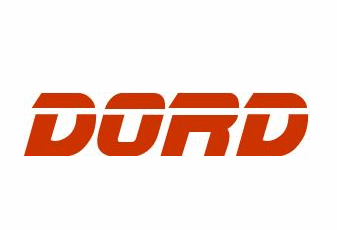
Happy Dord Day. Dord dord dord dord dord! Try to use it in conversation. “Don’t be such a dord,” you can say to someone who is acting particularly dordly. Even though this is not, strictly speaking, the true meaning of the word dord, the fact is that the word dord has no true meaning, so you can adapt it to whatever specific purposes you choose. Dord it up! Follow your dord! Dord like the dord! Etc. It’s wide open. Dord.
What If The Hunger Games Were Real?
What If The Hunger Games Were Real?
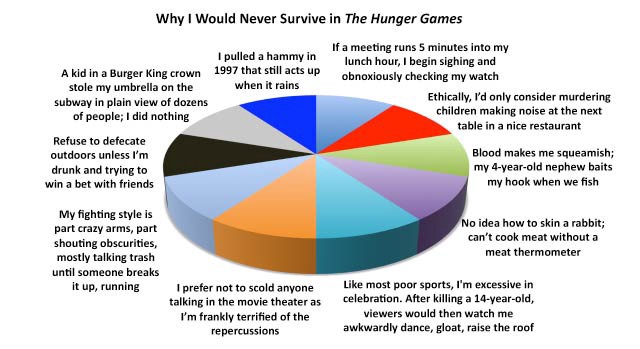
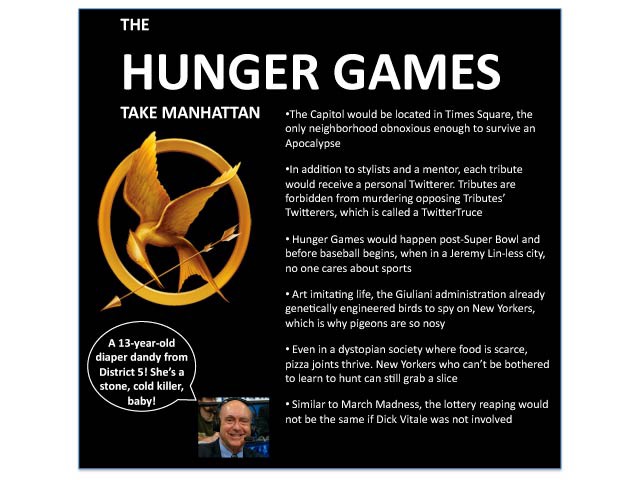
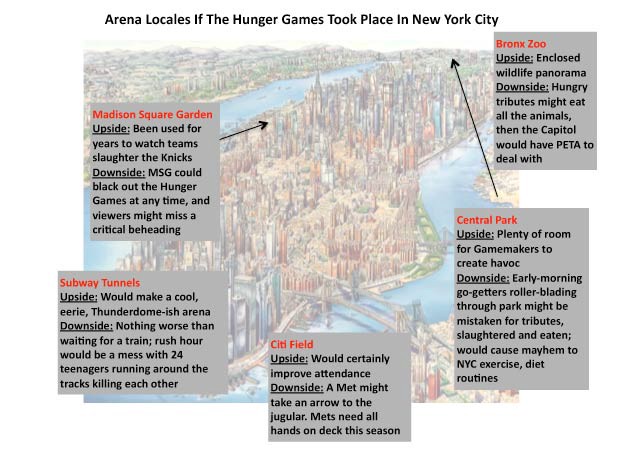
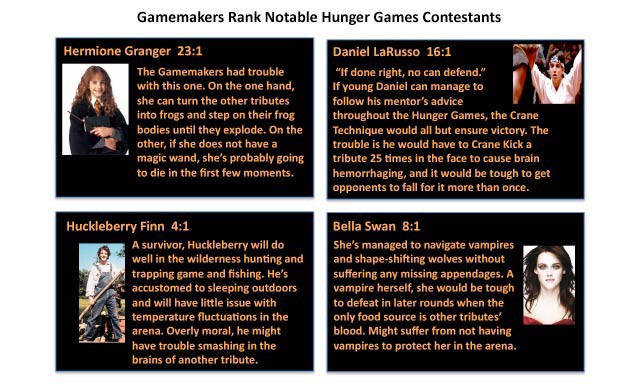
Previously: An Illustrated Look At Some Of Literature’s Near Brushes WIth Death and How To Write A Satirical Pop Culture Book Sold At Urban Outfitters
Jon Methven is the author of This Is Your Captain Speaking, due out in 2012 by Simon & Schuster. He can be reached here, or follow him on Twitter @jonmethven.
Here Are Five Random People I Follow On Twitter
When people ask me what I do for a living, I am going to just start saying “I look at Twitter” because honestly that is what I spend 90% of my “writing” workdays doing. Here are some of the strangers who make this lifestyle so rewarding.

These little peeks into cookbook author and Food 52 editor Amanda Hesser’s life are always delightful, and occasionally also instructive.

Caroline Contillo is a queer Buddhist activist I’ve never met. She delivers amazing koans that are helpful and uplifting, and also goes shopping.

Billy Cheer is some kind of magical art sprite gadabout who I have never met but love having in my Internet life so much. He always brings important relevant news and is never encumbered by false modesty.

Nico Muhly is, I guess, a composer? You would never know this from his Twitter. Idiosyncratique spellinges are a particular expertise/skill.

Johanna Fateman is a musician, salon owner, and brilliant observer of such crucial details.
Eight Teams Perched, Precariously, On The Bubble

We’re now two weeks away from Selection Sunday, and Bubble Watching appears to have become the number-one pastime in the country. Judging from the sheer number of ‘Bubble Watch’ segments out there, every major sports outlet wants to try their hand, apparently. But then that’s all part of the fun of the NCAA tournament process, and the anticipation and prognostication over who’s in, who’s out and who’s sweating it will last until the CBS crew finishes announcing the brackets. In the spirit of fellowship, let’s enter the fray and do some Bubble Watching of our own.
UCONN (17–11, 7–9 Big East)
As the defending national champion (and preseason top four team) plays out the end of the season, college hoops fans are debating not whether the team can win it all again, but whether it even deserves an NCAA berth. It’s a startling fall from grace for the Huskies, and a classic example of what happens when an über-talented, over-hyped team lacks a soul or leadership.
Like some of the other on-the-Bubble teams on our list, Connecticut has only a few quality wins (Florida State, Notre Dame on the road). That said, UCONN has enough talent to remain a team no one wants to face in the second round of the tournament. But beginning with a road loss to Seton Hall just after the New Year, something within the Huskies seemed to break and what should have been a season spent making plans for a return trip to the Final Four became a slow grind to the Tournament Bubble. After nearly snatching a win over No. 2 Syracuse on Saturday before falling by a basket at home, UCONN has now lost eight of 11. With no chances remaining in the regular season to wow the committee, the Huskies will need to get on a roll in the Big East tournament to lock a bid. The Huskies’ trend lines are not good, but history suggests the Big East will get a few teams in that don’t deserve it — UCONN may be one of those teams.
NC State (18–11, 7–7 ACC)
The Atlantic Coast Conference has long been one of the game’s elite collection of programs, but this season it’s looking more and more like a shallow pool. Beyond Duke and North Carolina, a.k.a. the usual suspects, only Florida State has much to brag about, principally wins over those aforementioned ACC powerhouses.
Mark Gottfried has done a great job in his first season in Raleigh, upgrading the talent while also getting more out of who remained from Sidney Lowe’s decently skilled roster. But his young squad may have squandered one too many opportunities to make the leap to NCAA tournament-good. With a resume that only looked OK on paper (wins over Texas, at Miami) heading into the stretch run, the Wolfpack weren’t able to seal the deal with opportunities against Duke, North Carolina and Florida State in consecutive games. Like UCONN, barring a surprising conference tournament showing, too many narrow losses may mean NC State will be disappointed, and Gottfried’s rebuilding job will start in the NIT in Year 1.
Northwestern (17–11, 7–9 Big Ten)
Northwestern has never made an NCAA tournament. Never. As in, never ever. They’re the only team in a BCS conference to hold that distinction. Yet with last season’s addition of four more teams to the field, and many other middle-of-the-pack teams struggling, the NCAA’s perennial bridesmaid may finally see some action.
But the Wildcats have plenty of work left to do. At this point, Northwestern is really hanging its hat on its mid-January win over Michigan State, and understandably so. Non-conference wins over LSU, Seton Hall and Georgia Tech mean even less than usual this year, as only Seton Hall is even a marginal NCAA hopeful. Still, with Ohio State coming to Evanston this week and a winnable game against Iowa looming, there is still hope for the Big Ten’s lone tournament virgin. Of course, we’ve been here before with the Wildcats. There are reasons Northwestern has never played an NCAA tournament game, after all.
Mississippi State (19–10, 6–8 SEC)
A month ago, some were predicting Mississippi State as a sleeper Final Four pick. The Bulldogs earned a top 15 ranking and, with power in the paint and a quality senior point guard, they had the look of a team with the potential to make a bracket run. Somewhere along the way, however, things fell apart, and now six losses in their last eight, including a miserable stretch of five defeats in a row, have put Mississippi State’s very NCAA viability into serious jeopardy.
MSU’s out-of-conference docket is a chunk of fool’s gold. The luster of wins over a then-ranked Texas A&M; (now 13–15) and Arizona (not in the top 50 RPI) has faded significantly and other than a win at home against Vanderbilt, there’s not all that much to point to. Factor in the February implosion, and it’s looking grim in Starkville barring a sudden resurgence. The Bulldogs had Kentucky on the ropes in a game that might have booked them a ticket, but couldn’t close out the Cats last week. Two crummy SEC opponents remain in the regular season, meaning that like so many other teams around the country, it may require a trip to the conference tournament semifinals or even better in order to raise a glass Selection Sunday. Losses to either of the aforementioned crummy teams in the regular season’s final week would probably seal the Bulldogs’ fate barring winning the automatic SEC bid.
VCU (25–6, 15–3 CAA)/George Mason (23–8, 14–4)/Drexel (25–5, 16–2)
Virginia Commonwealth’s unlikely path to the Final Four last season shone a bright light on the Colonial Athletic Association, the conference in which VCU plays and in which it didn’t not win either the regular season or conference tournament title before shocking the basketball world last spring. While aficionados of the sport knew there was quality basketball being played in the CAA, in the shadows of the East Coast’s major conferences, few understood just how much depth there was until last March, when the Rams proved George Mason’s Final Four appearance back in 2006 was no fluke.
Drexel, returning six of its top seven this season, was picked in the preseason to be the league’s standard-bearer and that it did, losing just twice in conference and not at all since January 2nd. George Mason and VCU were picked Nos. 2 and 3 in that poll of the coaches and media, and things have nearly held to form, only with VCU leaping over GMU in the conference standings.
But despite the gaudy win totals of each, a lack of marquee non-conference wins make it unlikely that the CAA will get three teams into the field, even expanded as it is. Drexel’s best non-CAA win is probably Princeton, which says it all. George Mason’s is Bucknell and VCU’s is South Florida. Absent a win at what’s likely to be a very competitive and entertaining conference tournament, there’s no telling whether the NCAA Selection Committee will find enough in any of these teams’ non-conference seasons to warrant their inclusion and thus the exclusion of other Bubble teams, especially those in BCS conferences.
Whether VCU’s Final Four run last year will tip the scales in their favor is of course impossible to know. It’s not supposed to, but maybe it should. These are all three teams heavy on upperclassmen and well coached, and who may toil outside the mainstream but who on a neutral floor would certainly be competitive against fellow Bubble mates.
Xavier (18–10, 9–5 A10)
Heading into the final nine seconds of its 23-point win over arch-rival Cincinnati on Dec. 10, the Musketeers were riding high, sporting a soon-to-be perfect 8–0 mark and wins at Vanderbilt, Cincinnati and Butler. Then the Crosstown Brawl happened, sullying the reputation of stars Tu Holloway and Mark Lyons and the program as a whole in the process. Probably most surprising piece of fallout from the fight is that the team that lost the game actually rallied while the team that emerged victorious tanked.
Xavier dropped five of its next six games, effectively submarining its at-large candidacy in the process. A pedestrian conference season has left the once-top-ten Musketeers in jeopardy of missing the tournament altogether. Tuesday’s match-up with fellow Bubble-ites Saint Louis could work as a de facto audition for the Selection Committee, as it’s unlikely both make the field of 68 from the Atlantic 10 as at large teams.
The RPI and Strength of Schedule numbers for Xavier are middle-of-the-road, and a road win over the Billikens would surely help gussy up the Musketeers’ tournament resume, if not its overall reputation. One thing is for certain, however. Xavier should focus on winning basketball games and not on chest-thumping. Few fans will recall who won the game with Cincinnati, as both emerged losers. Perhaps only by finding the form that got Xavier to the top 10 originally can the program gain back some of its shine.
Historic Moment Recounted
Someday, when the history of the Internet is assembled, this accounting of the first time someone live-Tweeted the Oscars will provide invaluable source material to whoever is forced, probably out of the worst kind of desperation and basic human need, to write it.
Laundry Dirty
Lulu Eightball and New Yorker cartoonist Emily Flake is keeping a (cartoon) diary of her workweek over at The Comics Journal. Cartooning seems about as glamorous as blogging, to wit, “my underwear situation has become untenable.”
Monstrous Lie Told

“Contrary to popular belief, socks and sandals are chic.” That is wrong, right? Please tell me that is wrong. Otherwise NOTHING makes sense anymore.
Photo by Lobke Peers, via Shutterstock
Urineness Acknowledged
“Now we have Ryan Braun’s experience with the ‘system,’ and nobody can be surprised that his urine was badly handled. And, by the way, let’s stop calling it ‘the sample,’ too, OK? That’s misdirection by euphemism, and it works to hide the personal violation that mandatory drug testing truly is. Ryan Braun had to give baseball some urine, and the baseball official tasked with handling Ryan Braun’s urine kept Ryan Braun’s urine in his freezer for 44 hours, which is a long time to keep someone else’s urine, to my way of thinking.”
'Act Of Valor' And The Myth Of An Anti-Military Hollywood
‘Act Of Valor’ And The Myth Of An Anti-Military Hollywood
by Abe Sauer

Act of Valor cleared $24.7 million this weekend. Along the way to the movie’s release, it’s become an accepted bit of truth that the film is meant to boost Navy recruitment. But while that may once have been the filmmakers’ intention (and the Navy’s), the final product works as a piece of propaganda in an entirely different way. Another piece of the film’s promotion has been to portray Act of Valor as running against the grain of Hollywood: the first pro-military film of its kind since Vietnam. That is even less true.
Act of Valor is actually a sequel of sorts. Directors Mike McCoy and Scott Waugh made a video in collaboration with the military in 2007 that was a kind of infomercial about the Navy’s Special Warfare Combatant-craft, or SWCC (“swick”). It’s no surprise then that SWCC “quiet professionals” feature heavily in the plot of Act of Valor. This previous work likely opened the door for the two when the Navy devised a plan to use Hollywood to drive recruitment. An article about Act of Valor, published by The San Francisco Chronicle last year, noted that “the Navy will keep raw footage to use for training and other purposes.”
The final result is an incoherent action film that fails miserably as a recruitment tool. The plot is laughably simplistic (as even those sitting most squarely within its target demo have noted) and the action is bloodless, as one would expect from a training video. In fact, the whole project, right down to its frequent use of the first-person-shooter perspective — captured with Zeiss ZF cameras mounted on the SEALs’ helmets — feels entirely like a video game. Indeed, Act of Valor had tie-in deals with Battlefield 3, and despite all the throwing around of the word “authenticity,” the movie’s main villain, a Russian terrorism-enabling gangster bad guy named Christo, is played by actor Alex Veadov whose previous acting credits include the video games Syphon Filter: The Omega Strain, Shadow Ops: Red Mercury, Tom Clancy’s Ghost Recon: Advanced Warfighter 2, Call of Duty: Finest Hour, Call of Duty: Black Ops, Joint Operations: Typhoon Rising, Shadow Ops: Red Mercury, Syphon Filter: The Omega Strain, and, yes, SOCOM II: U.S. Navy SEALs. In one scene, “Senior,” a SEAL interrogator, screams at Christo, “What do you think this is, a game?” Well…
But where Act of Valor excels as propaganda is as a justification for an increasing global special-ops hawkishness. It’s a made-to-order reinforcement for a security-obsessed populace that sees danger at every corner, every border, and inside the jacket of every bystander. It was no accident that the film had a special screening at SHOT Show, the annual monster trade show for the firearms industry. The pro-firearm website The Truth About Guns called out Valor’s storyline as terrible and clichéd, but waxed orgasmic about the gunfire scenes, concluding its review: “Two words: live ammunition. Love it.” The film got a glowing eight-page feature in the NRA’s Warrior magazine. And why wouldn’t it? A plot in which the Russian mafia helps Muslim terrorists smuggle assembly-line-manufactured ceramic explosive vests capable of eluding metal detectors through tunnels used by Mexican drug cartels is sure to appeal to the same paranoid crowd targeted by all those LifeLock commercials played at nearly every Rush Limbaugh commercial break.
By the way, no kidding, LifeLock sponsored Act of Valor’s premiere.
The closing credits for the film include the 60 SEALs who have been killed since September 11, 2011. Why since 9/11? Because, 9/11, that’s why.
***
On their publicity rounds for the film, McCoy and Waugh have gone from interview to interview in the company of their straw man that Hollywood is a giant enemy of the military and that it took the two of them, working with the Navy, to finally make an armed forces-positive flick. At times it even seems that by sheer dint of having learned that SEALs use the term “downrange” to describe being active in the field, McCoy and Waugh feel they qualify as honorary SEALs. The two have blasted Hollywood’s unrealistic portrayal of soldiers as “Rambo-Terminator with his head screwed on sideways.” Which is of course why they hired Kurt Johnstad, screenwriter of 1997’s True Vengeance, about a Navy SEAL forced to assassinate somebody after his daughter is kidnapped by the Yakuza, to script their film.
In a Washington Times interview McCoy boasted, “The Vietnam legacy has been this fog that wouldn’t lift for 40 years. And no one had the balls in Hollywood to go the other way, to say, ‘Let’s really look at the world and the men and women serving right now.’ That’s 40 years ago. Why are we still using the same ideology, this anti-military ideology?”
Given his busy schedule as part of the Pentagon’s propaganda network, McCoy can be excused from not having made it to a movie theater in the last decade or so. If he had maybe he’d have noticed that Hollywood and the military are currently enjoying a level of cooperation not seen since World War II.
***
In an interview, Matthew Alford, author of Reel Power: Hollywood Cinema and American Supremacy, told me that his research shows that between 1991 and 2002 “approximately a third of major films that depict the US military have direct cooperation and script rewrites by the Pentagon.”
Alford added, “The national security services in Hollywood, specifically the CIA and Armed Forces, have long exerted a powerful influence over screenplays we all know.” Every time a film features an aircraft carrier, some tanks, or any other piece of major military hardware, you can bet the Department of Defense provided it, and received script “consideration” in return. From Transformers to this summer’s Hasbro-based Battleship, this is how Hollywood does military films now. Even the weepy love story about an Afghanistan vet and his gal back home, Dear John, worked with the DOD in order to be able to film at Charleston Air Force Base with use of aircraft and “active duty” airmen as extras.
A great recent example of the extensively of Hollywood’s cozy relationship with the military is Battle: Los Angeles.
If you missed it last year, the movie’s about a Camp Pendleton 2nd Battalion 5th Marines unit that has to battles its way out of a Los Angeles under invasion from aliens. Hardly a realistic scenario, right? But filmmakers received extraordinary cooperation from the Marines Corps, including guidance, resources, training and access to Camp Pendleton. In return, Marines Lt. Col. Jason Johnson helped guide the project and “protect” the image of the Corps. But while Johnson frequently acts as a liaison for such film productions, even offering “script notes,” you won’t find his name in the credits of any film. And while Act of Valor may have “starred” active-duty SEALS, Battle: Los Angeles starred about 50 active-duty Marines. At the film’s premier, at Camp Pendleton, star Aaron Eckhart said, “This is a movie about Marines… kicking ass. When people see this movie, we want to make sure that they love the Marines.”
No matter director McCoy’s protestations, it’s a not-very-well-kept secret of Hollywood that there is hardly anything such as an anti-military Hollywood movie. In his 2003 book about being a Marine sniper in the 1991 Gulf War, Jarhead, Anthony Swofford writes:
But actually, Vietnam war films are all pro-war, no matter what the supposed message, what Kubrick or Coppola or Stone intended. Mr. and Mrs. Johnson in Omaha or San Francisco or Manhattan will watch the films and weep and decide once and for all that war is inhumane and terrible, and they will tell their friends at church and their family this, but Corporal Johnson at Camp Pendleton and Sergeant Johnson at Travis Air Force Base and Seaman Johnson at Coronado Naval Station and Spec 4 Johnson at Fort Bragg and Lance Corporal Swofford at Twentynine Palms Marine Corps Base watch the same films and are excited by them, because the magic brutality of the films celebrates the terrible and despicable beauty of their fighting skills. Fight, rape, war, pillage, burn. Filmic images of death and carnage are pornography for the military man; with film you are stroking his cock, tickling his balls with the pink feather of history, getting him ready for his real First Fuck. It doesn’t matter how many Mr. and Mrs. Johnsons are antiwar — the actual killers who know how to use the weapons are not.
Paradoxically, what has become maybe the best piece of Hollywood pro-military recruitment propaganda is not an Act of Valor-like syrupy fictional tale starring live ammunition and guys who hold the guns in ways actors could never be taught. It is Black Hawk Down, the story of the disastrous 1993 mission in Mogadishu in which US helicopters were shot down and numerous soldiers were wounded and killed. The military itself fully understands how powerful its product placements are. Conventional wisdom would dictate that Black Hawk Down would hardly be a film project that the Pentagon would support, but support it they did. And it has paid off handsomely. In Generation Kill, his book about a Marine battalion in Iraq during the 2003 invasion, journalist Evan Wright notes that the unit in which he was embedded watched Black Hawk Down at Kuwaiti Camp Mathilda on the eve of joining combat operations in Iraq.
Black Hawk Down is such a bit of pro-Pentagon celluloid that it is now the prototype for top-line films in which the DOD has access. Watch Battle:Los Angeles and it is impossible not to see that the final scene — during which the Marines, despite being exhausted and battle weary, begin reloading to get back out there — is not a direct lift of the final scene of Black Hawk Down in which Eric Bana’s Delta Force soldier Hoot packs supplies to, unbelievably, get back out there into the fight. Act of Valor contains its own (maybe unintentional) echo of Black Hawk Down when a member of SEALs team operating in Africa refers to targets as “skinnies.”
Act of Valor was already filming when SEAL Team Six took out Osama bin Laden, and the film has surely benefited from the SEALs’ rightful stardom. Black Hawk Down was likely helped to box-office success due to a similar coincidence of timing. Already in the can when bin Laden and company took down the Twin Towers, Black Hawk opened in theaters just a few months later.
***
Michael Golembesky joined the Marine Corps shortly after 9/11 and was stationed in Afghanistan. In Level Zero Heroes, he chronicles a 2009–2010 operation to retrieve two soldiers’ bodies after an air drop gone “terribly wrong.” He recently told me, “Hands down I would have to say that Black Hawk Down is the only military movie that has come close in presenting the chaos and complexity of emotions that is associated with modern-day combat.” As he pointed out, “because Black Hawk Down was based on actual events and true perspective from the men fighting on the ground, it speaks to people in a way that words can’t.”
Golembesky believes the story he tells in Level Zero Heroes is the “Black Hawk Down of Afghanistan,” that is, a story “just as complex and violent.” The book recounts how two 82nd Airborne Paratroopers were drowned while trying to retrieve supplies in the Bala Morghab River after an air drop, and the involvement of Special Operations Team 8222 in “one of the most massive and lengthy Personnel Recovery missions in the history of the Afghanistan War.” The mission, which came to be called Operation Hero Recovery, included an attempt to break the Taliban’s stranglehold on the valley, during which one of the unit’s mentors was killed in a firefight.
With all due respect to Act of Valor’s “authentic” and “live round” firefight sequences, Golembesky’s Level Zero Heroes project contains hours and hours of footage, much of it filmed by helmet cams during actual firefights.
Golembesky is still searching for a publisher for his book, which, he allows, is still in rough manuscript form. “I am taking it slow and looking for the right outlet for telling these brave heroes’ story,” he said. Interested parties are all welcome to email him.
Asked if he plans to see Act of Valor, Golembesky told me he has “no plans to go see it.” Then he added, “I have not really heard any buzz about it. Is it based on true events?”
Abe Sauer is the author of the book How to be: North Dakota. He is on Twitter. He writes weekly about film influence and product placement at Brandchannel. Email him at abesauer @ gmail.com.
